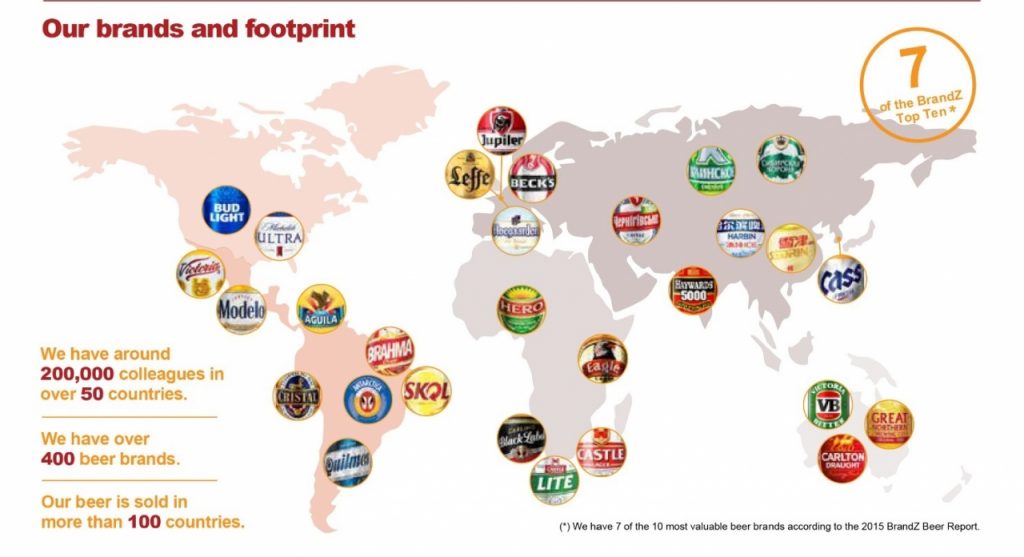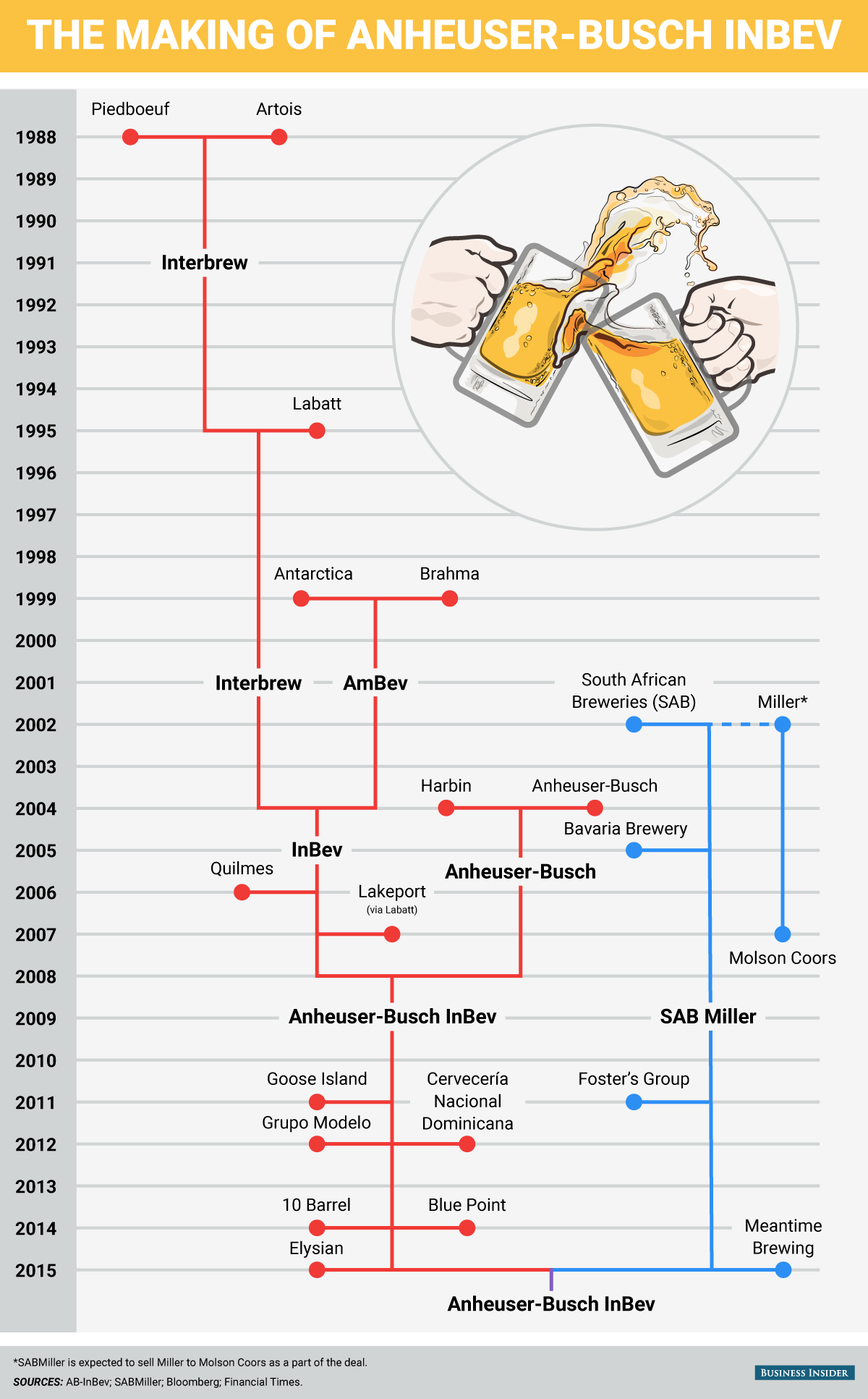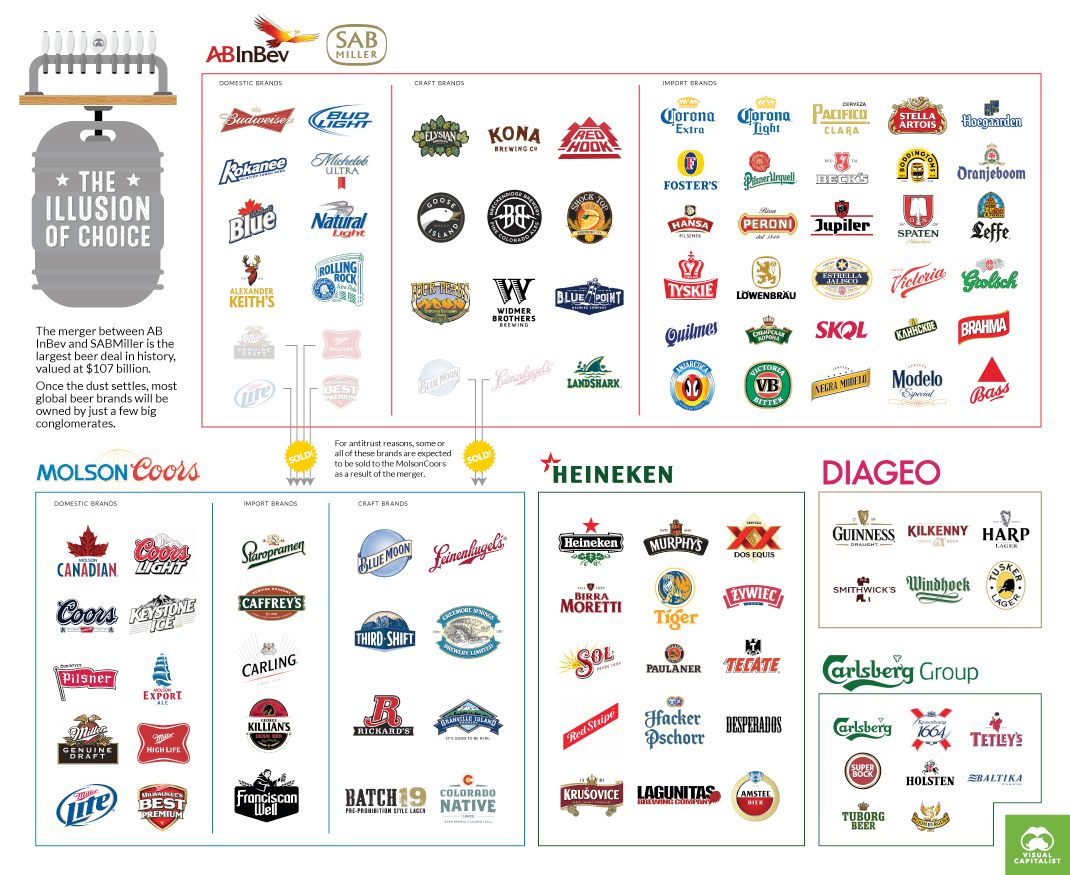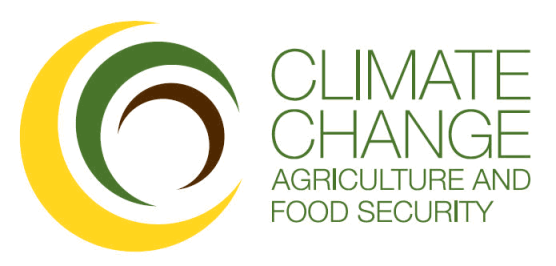The Largest Beer Producer in the World

Anheuser-Busch is a company name I grew up hearing on a regular basis. Growing up in about an hour and a half outside of St. Louis, I was never far from a neon sign advertising Budweiser, Bud Light or Busch beer. Iconic artwork, the Budweiser Clydesdales and Cardinals baseball games at Busch Stadium are all things I remember fondly from my childhood. What 90s kid from America doesn’t remember the “Bud-weis-errrr” frog commercials or the “Wazaaaaaap?!” we used to scream at each other on the phone? It’s easily arguable that these commercials influenced us long before we had an understanding of the products they represented.
When Anheuser-Busch was acquired by InBev in 2008, my home state of Missouri was rocked with resentment at the Busch family. As an American icon, one that made Missourians proud of their home state, there was a lot of confusion surrounding the sale of the brand and the following effects. Here I would like to shed a little bit of light on how Anheuser-Busch InBev became the largest beer company in the world, and why I think it’s important to work with them despite disagreeing with some of their historical and present business practices.
The flowchart below from Yahoo Finance and Business Insider gives an overview of the base corporations, their founding years and dates of mergers/acquisitions.

As you can see above, the giant conglomerate that is ABI has been a recent occurrence, within the last thirty years many of these companies went from being independent companies to part of the largest brewing and malting organization in the world. Currently around 200 brands worldwide comprise AB-Inbev’s extensive portfolio. I can guarantee that brands that you come into contact with regularly, almost anywhere in the world are produced by this company, or one of the other top 5 Beer companies trying to catch up. An overview of familiar brands is shown below thanks to the folks at Visual Capitalist:

As of last year, AB-InBev has since acquired SABMiller, although they sold off some of their U.S. based brands to MolsonCoors to comply with anti-trust laws. I was personally VERY surprised to see that Franciscan Well, one of my favorite craft brands in Ireland is owned by Molson Coors. I do know that the University of Cork has a strong food science department though, so I suppose it should be of no surprise that multi-national organizations would have stock there in Cork City.
At this point I hope you’re able to begin to grasp the sheer size and magnitude of this company.
So why am I telling you this and why do I care? How does someone with a passion for the environment and for the craft industry agree to work with such an organization? With a positive temperament and and a broad vision for the future, I can tell you from experience!
Here’s why:
As a collective, Anheuser Busch-InBev is the single largest buyer of malting barley in the world at over 30% of the market share. That’s a massive number with huge resource impacts worldwide, and where there is high use there is also opportunity for increases in efficiency and better resource allocation. In effect, my argument is that you can spend your entire life working with individual farmers to improve crop yields, reduce water use and implement SmartAg practices. That’s a noble cause and people are needed on the ground level to do just that. There is a great need for agricultural extension workers to bring appropriate technology, techniques and plant genetic resources to farmers. But to affect large-scale change in the world I think that some of the biggest organizations show opportunity and promise as some of the best proponents of environmentally beneficial policies and practices. With President Trump’s recent renunciation and withdrawal of the U.S. from the Paris Climate Agreement I find it encouraging to know that the programs and directives for improved agricultural production, water and energy use will continue in spite of this political set-back. Examples of this abound within the company and industry, such as AB-InBev’s commitment to shift to 100% renewable energy by 2025 or Heineken USA Group reducing their water use by 20% between 2008 and 2014.
While adjustments in my mindset have had to occur, I’m feeling hopeful about the future and I continue to hope that my work here is helpful to the cause- even in the smallest way.
